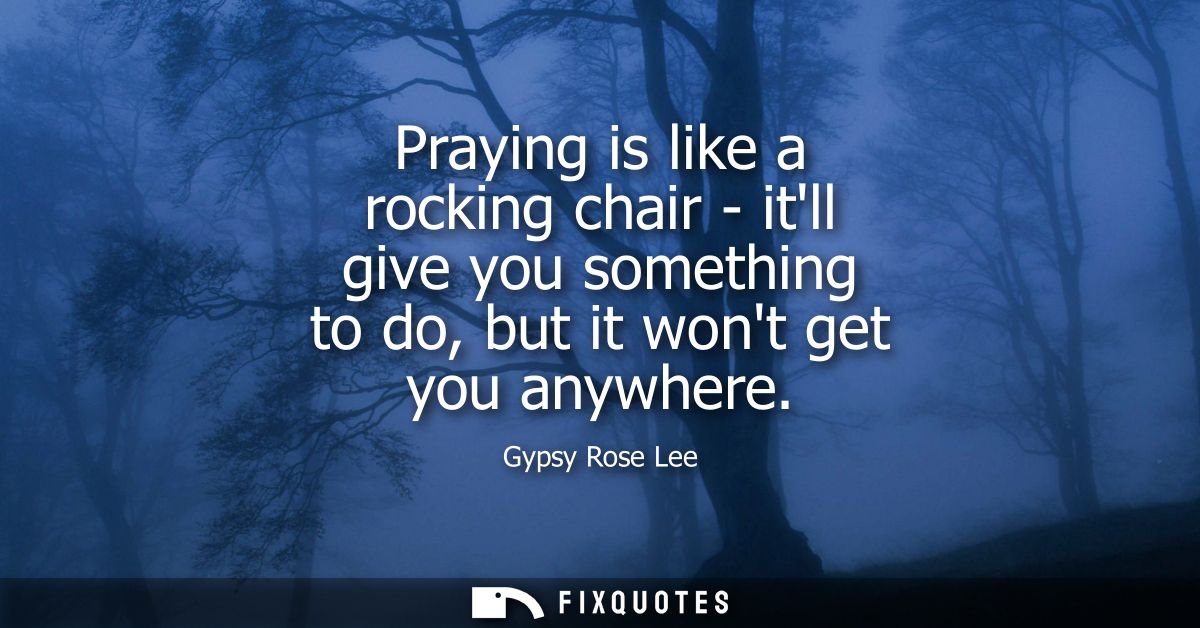"Praying is like a rocking chair - it'll give you something to do, but it won't get you anywhere"
About this Quote
The comparison of prayer to a rocking chair draws upon the imagery of a familiar, comforting object that allows for movement without progress. Sitting in a rocking chair, a person experiences a sense of activity, the back and forth motion provides a feeling of doing something. However, despite the soothing rhythm and the passage of time, there is no actual forward momentum or tangible change in location. The chair stays in its place, and the person ultimately remains where they began.
Relating this to prayer, the quote hints at skepticism toward the practical efficacy of praying. Prayer, from this perspective, provides comfort, structure, and a sense of engagement for those who practice it. It occupies time and can offer solace, acting as a ritual during moments of uncertainty, fear, or distress. The act itself can foster reflection, hope, and psychological ease much like the repetitive movement of the rocking chair can calm nerves or provide a meditative state.
However, the comparison underlines a perceived futility in expecting prayer alone to create concrete change in one’s circumstances. While prayer may offer emotional or spiritual relief, it does not, according to this view, enact the real-world actions or solutions necessary to alter a situation. The implication is that initiative, pragmatic effort, and tangible deeds are required to effect progress or outcomes. Without these, prayer serves more as an occupation, a way to pass the time, than as a means of moving life forward.
Through her metaphor, Gypsy Rose Lee subtly critiques reliance on prayer as a substitute for action. She reminds the audience that while prayer can feel meaningful and provide comfort, true change and results come from actions that move us beyond the original starting point. In the end, the gentle swaying may calm the mind but will not carry anyone to a new destination.
About the Author

